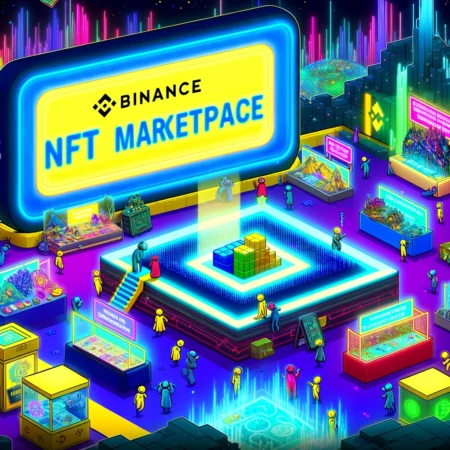The crypto world is fast-paced, and today’s leaders will be replaced at any time. The only constant is change, but at the same time, new outlets will be born in each new cycle. After Solana SOL -13.81% broke out in the public chain field, there were no strong opponents until the emergence of 6 new public chains. Only by understanding the opportunities can we better seize the opportunities.
Most of the 10-fold or even 100-fold projects that broke out in the last round of bull market are public chains. These public chains that broke out are often born in the last round of bear market, so every round of bull and bear will have some potential public chains stand out .
At present, Ethereum ETH -8.87% is still the dominant one. Although Ethereum is merged and upgraded, it seems to be developing in a better direction, but from the perspective of the industry, it is unhealthy for one industry to be dominant. Only when there is competition can there be better The development of the industry, but since Solana emerged as a strong competitor of Ethereum, so far there has not been a second strong competitor until 6 new public chains began to appear in everyone’s field of vision. The above is the current market competition pattern and status quo.
What are the highlights of these new public chains? It will be analyzed in detail from the three aspects of the founding team, investment institutions, and technical principles. Some of these public chains have rapidly risen to become popular players with the help of a new programming language Move. Let’s start with those with technical advantages. When it comes to technical advantages, we need to extend the knowledge of move.
About Move

In 2019, Facebook, together with many institutions inside and outside the circle, jointly created the block chain project libra. All the major listed companies and top institutions that participated at that time came to join Zuckerberg’s team to build the libra chain. , and later Libra changed its name to Diem. It was supposed to show its talents, but it was stillborn due to the regulatory pressure of the government.
Although it is only halfway through, its biggest contribution to the industry is the Move language. The Move language is a smart contract originally created by Facebook. Its programming language is different from all languages on the market today. As a set of independent languages, libra left behind in addition to the Move language, there are also a large group of developers of the early libra projects. These top blockchain talents have inherited the will of libra and formed the following several New public chain.
Aptos

Aptos is a leader among all new public chains using the Move language, because top teams and top institutional financing are all bonus points.
The founding team of Aptos are all members of Diem. They are early developers and researchers of libra. They have a strong technical background. CTO Avery Ching was the technical director of the encryption platform Novi. Novi is a wallet project on libra. Application, one is the stable currency project Diem, and another more important project is Novi.
Aptos’ vision is to focus on improving the security and scalability of the first-layer network, creating an infrastructure network that can serve billions of people. It separates the consensus protocol from transaction execution, which not only improves processing efficiency, but also makes it vulnerable to attacks. risk diversification, which is a major innovation in technology.
The final result of Aptos is 10W TPS. If it can process 100,000 transactions per second, it will be very competitive in the public chain market. At present, Aptos has launched the main network and the governance token APT, and looks forward to the follow-up development.
Sui

Like Aptos, Sui uses the Move language, and the founding team still comes from the libra team.
The difference is that the founding team of the Sui public chain comes from the stablecoin project Diem, which can be simply understood as a company divided into two factions. Evan Cheng, the CEO of the Sui team Mysten Labs, is a Chinese engineer. From this year to September this year, he has been working as the director of blockchain engineering at Facebook.
Sui’s financing situation is also very strong. In November 2021, Mysten Labs raised $36 million in Series A financing led by A16Z. In September 2022, Sui development team Mysten Labs completed $300 million in Series B financing, led by FTX Ventures .
Technically, Sui has upgraded the Move language and launched the Sui Move version. The new version not only inherits the security and flexibility of Move, but also improves the storage mechanism and address type mechanism, so it is an upgraded new technology. This The new technology improves network performance and reduces transaction confirmation time, which is faster than simply using the 1.0 version of Move. Sui claims that complex transactions will not be completed in more than 3 seconds.
Linera

Linera also uses the Move language. The founding team is still from Libra. Linera focuses on development and promotion, and is suitable for a new execution mode of linear expansion. Linear expansion can double the number of machines to double the system capacity and win by quantity.
Compared with the previous two projects, Leader started the latest, and it is still in the early stage. The vision is to create a low-latency blockchain network that can be easily expanded like a Web2 application.
Mathieu Baudet, the founder of Linera, who helped Zuckerberg create Diem, is also the chief researcher and engineer of Novi. He combines the strengths of Aptos and Sui, making him an almighty founder.
In addition to Meta members, the founding team of Linera is also from Zcash, which brings together a group of very experienced engineers. Linera’s financing is also very strong. In June 2022, Linera completed a $6 million seed round led by A16Z. Although the amount of financing is not large, he has been recognized by A16Z like Aptos and Sui, and it is also a very potential public chain.
The technical principle of Linera focuses on the Fast Pay and Zef protocols that founder Mathieu Baudet has participated in the development of, which can minimize the interaction between validators and speed up transactions.
Aleo

The highlight of Aleo is the development of a new language-LEO. Aleo is built using its own LEO language.
After Aleo was established in 2019, it began to form a team. The founding team of Aleo was Howard Wu, Micheal Beller, Collin Chin, and Raymond Chu, including two Chinese. The other members are all from big factories, such as Google, Amazon, Facebook, etc. At the same time, they have united with many universities, such as the Ivy League in the United States, which is an unattainable academic hall. Top cryptographers, engineers, designers, all joined Aleo’s team.
Let’s look at financing. Aleo completed a $28 million Series A financing in April 2021, and A16Z still participated in the investment. In February 2022, Aleo once again completed a $200 million Series B financing led by SoftBank and Kora Management, and A16Z continued to follow.
The core technology of Aleo lies in Zexe and Leo. Zexe will be improved on the Ethereum Layer2 technology ZK Sync technology. The main function of this technology is to encrypt simple token transfers and transactions. It is actually a privacy technology, and One point is that as long as the program running on Aleo using the LEO language can use the encrypted function, your transfers are anonymous.
Iron Fish

Iron Fish can be translated into iron fish in Chinese. Iron fish is some vocabulary used by the US military for encrypted transmission of submarines during World War II. Obviously, what Iron Fish wants to do is to solve the problem of anonymity and privacy.
The founder of Iron Fish, Allen, is a post-90s female entrepreneur who graduated from Virginia Tech and worked for Microsoft and Airbnb. Iron Fish’s engineering team is mainly composed of development members who have quit jobs in Microsoft and Uber before. Although they are not professional blockchain talents, they all have one thing in common, that is, they have a good understanding of B-side needs. ‘s killer. In the absence of a technological edge, Iron Fish is all about applications.
In November 2021, A16Z announced to lead a $27.6 million Series A round in Iron Fish.
Privacy in the blockchain is mainly divided into two parts, one is identity privacy, and the other is transaction privacy. The new protocol or technology developed by Iron Fish can hide all these information and make a true privacy public chain. It should hide transaction information, mining information, wallet information, etc., except for the private key owner, any The second party cannot see it, which can be said to be absolute privacy, but there are many problems in Iron Fish’s testnet network at present, such as the problem of block chain congestion, the problem of decoupling between browsers and on-chain information, I hope all these problems All can be resolved before the mainnet goes live.
Anoma

Most of the Anoma team members have research and development experience in leading projects in the industry such as Cosmos ATOM -16.81%, Polkadot DOT -15.82%, Tezos XTZ -17.00% and Chainalysis, and the professional and academic background of the entire team has certain support.
In April 2021, Anoma completed its first round of financing of $6.75 million, led by Polychain Capital. In November of the same year, Anoma raised another $26 million, with Polychain Capital continuing to lead the round.
Technically, Anoma focuses on two core technologies, one is barter, and the other is privacy. It hopes to build a private payment system that serves everyone, so as to truly hand over financial sovereignty to individuals. For example, if I want to buy BTC, I can use NFT to buy it directly.
Regarding privacy, Anoma has designed a unified shielded pool that is shared among all assets. A series of technical means such as zero-knowledge proofs will be used in the shielded pool to ensure that funds are transferred and hidden to prevent others from tracing data.
In May 2022, Anoma announced the launch of a custom-made one-layer protocol, Namada, which is a component on the Anoma mainnet. This component is designed to perform shielded transfers for any kind of assets. This is an existing achievement of Anoma.
Risks and opportunities coexist. The higher the market expectation, the higher the pursuit of venture capital institutions, and the potential bubbles and risks of the project will also rise to a certain extent. Projects such as Terra have also repeatedly reflected this problem. And if the adoption rate of Layer 2 continues to rise sharply, will these new public chains encounter an untimely situation? Are they just a new round of forced narrative and capital games for venture capital institutions? These questions may be answered in the next market cycle.






